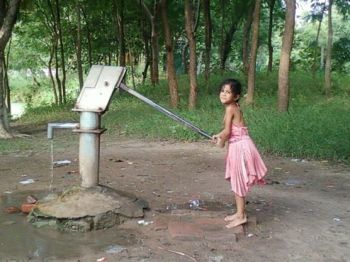POND – The mainstream habitat
We have been experiencing POND around us since our childhood days. We believe that ponds tell the story of the people who use them every day. Children always get involved and fascinated by ponds by thinking about nature and the surrounding environment by creating a strong relationship between people – pond – purpose throughout adulthood.

The people are mostly dependent on the pond for various daily needs like bathing, washing, cooking, animal drinking, and animal bathing, and seasonal purposes like irrigation, including some crops like red rice, lotus, and other agricultural activities. Often, people find themselves resting under the tree on pond embankments. Villagers construct a pond for habitat restoration for flora and fauna, fishing, biotic plants, animals, and micro-organisms. Basketmakers use the pond to dip their bamboo in the pond before making baskets to protect them from insects’ attacks. Extracting clay for brick making, house construction, and soaking cartwheels are the villagers’ occasional needs from the pond.
The people are mostly dependent on the pond for various daily needs like bathing, washing, cooking, animal drinking, and animal bathing, and seasonal purposes like irrigation, including some crops like red rice, lotus, and other agricultural activities. Often, people find themselves resting under the tree on pond embankments. Villagers construct a pond for habitat restoration for flora and fauna, fishing, biotic plants, animals, and micro-organisms. Basketmakers use the pond to dipping their bamboo in the pond before making baskets to protect them from insects’ attacks. Extracting clay for brick making, house construction, and soaking cartwheels are the villagers’ occasional needs from the pond.
Ponds dug differently for a different purpose. Every region has a different ‘type’ of the pond that includes wildlife ponds, swimming ponds, ornamental ponds, natural ponds, fish ponds, biological ponds, and a few more. However, ponds are often being constructed on the upstream part of the village as a shock absorber in flood-prone areas to protect the village and surroundings. Ponds are oriented in the east-west to retain water for a long time, while north-south loses consistently through the waves raised by the winds. Ponds are the primary source for recharging the groundwater of villages while mitigating droughts.
Decades ago, almost every farmer had a pond in the middle of the landscapes where they were most needed. Farm ponds were existed at natural low points in the fields, being fed by water seeping off the farmland. They act as mini-reservoirs, helping drain the fields during heavy rain while leaching water slowly into dry ground in drought times. Improving water quality, reducing water and soil loss from fields are beneficial for numerous good-quality farmland ponds.







